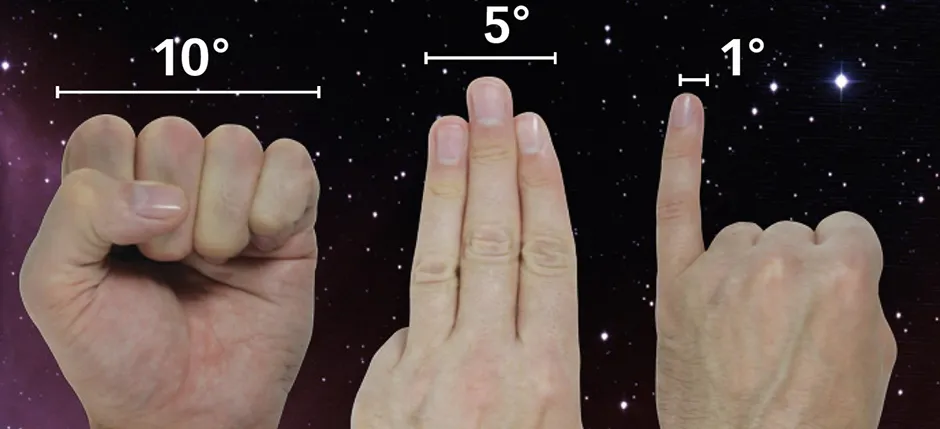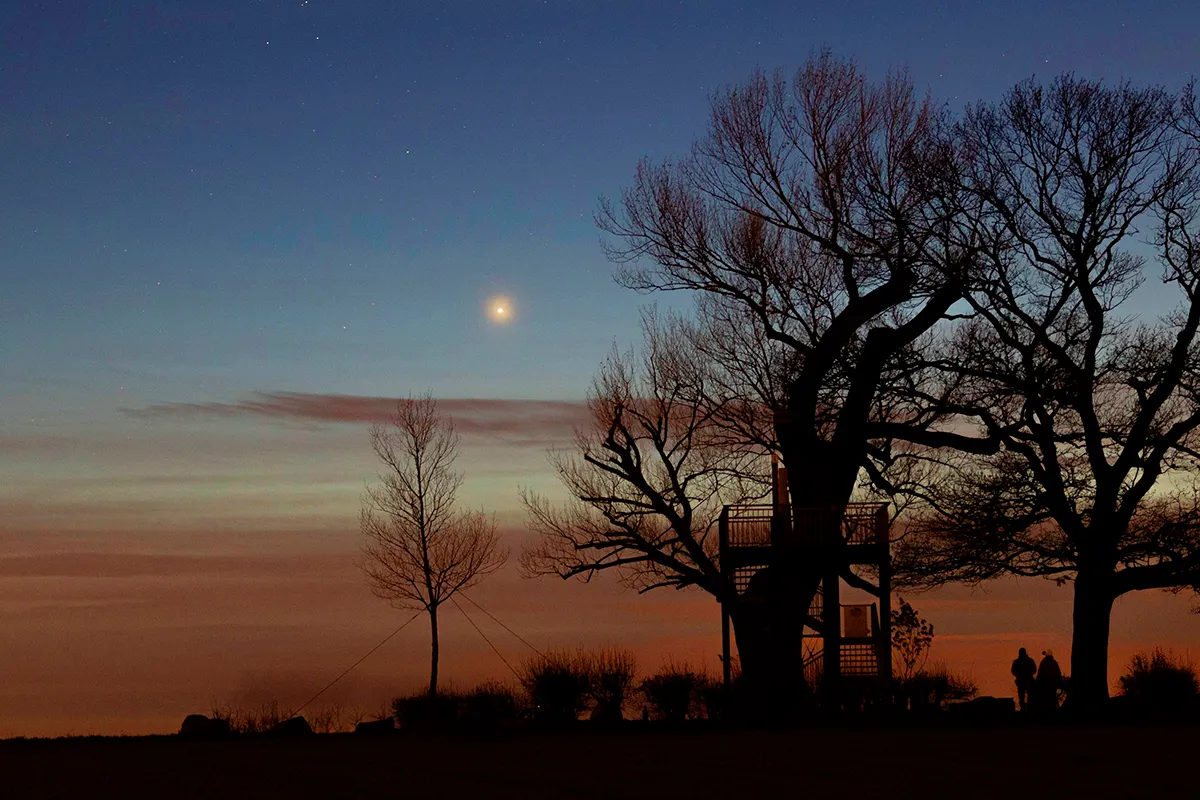Here we'll look at the easiest, most impressive stargazing events that can be seen with the naked eye this week, and how to see them.
Get more stargazing advice every week by listening to our Star Diary podcast, subscribing to our YouTube channel and signing up to our e-newsletter.
Complete newcomer? Read our beginner's guide to astronomy
In our guide we'll refer to magnitude (mag.) and degrees (°). These are handy stargazing terms to know.
Magnitude is the word in astronomy used to describe how bright something appears, and degrees are used to measure the apparent distance between objects in the sky.
1° is about the width of a finger held out at arm's length.

Night sky this week, 21–27 April
This week, there's a lot of buzz about the morning sky, as Mercury and Venus are visible, and there's even talk about a strange 'smiley face' in the sky on 25 April when the crescent Moon meets two planets.
More on that below...
On 21 April, Mercury is at greatest western elongation which means the planet is at its furthest from the Sun in the morning sky.
However, Mercury will be tricky to spot, rising around 05:30 BST which, at this time of year, is just before sunset.
Venus is a much better morning target, and if you cast your mind back to January and February, you'll remember Venus was a beautiful 'Evening Star', setting well after the Sun.
Now Venus is a 'Morning Star', rising before sunrise.
On 22 April, Venus reaches maximum brightness. Rising at around 05:00, it's a beautiful star-like point of light shining at mag. –4.8.
What's more, Venus is getting closer to the Moon each morning this week.

In actual fact, the Moon is getting closer to Venus, the Moon tracking eastward morning after morning so that, on the mornings of 24 and 25 April, the Moon forms a nice conjunction with Venus in the sky before sunrise.
You can see them both low in the east from 05:00 onwards, when Venus will be spectacular.
Look out for them on 25 April in particular, as the Moon will be below Venus.
You may have also heard that on Friday 25 April the crescent Moon will form a 'smiley face' with two other celestial objects in the sky.
The alignment this is referring to is Venus above the crescent Moon, Venus forming one 'eye' of this smiley face and the crescent Moon forming the 'smile'.
And the other 'eye' is the planet Saturn, which is below Venus and the Moon in the morning sky.
You may have guessed by now that, yes, this 'smiley face' is on its side, effectively rotated 90° clockwise.

Saturn, the face's 'right eye', however, will be very difficult to spot with the naked eye, rising after the Moon and washed out by the glare of the emerging sunrise.
So technically, yes, this 'smiley face' is visible, but very difficult to see and certainly not the spectacular event many are billing it as.
That morning, 25 April, Venus and the crescent Moon will be a beautiful sight on their own, and that's what we'll be concentrating on.
If you are attempting to view the Moon, Mercury, Venus or Saturn in the morning this week, you must take caution, as these planets are rising in the east just before the Sun.
Observing the Sun without proper solar equipment can damage your eyesight, so this week make sure to do your morning stargazing before sunrise, and avoid using binoculars or a telescope.

It's not all about the morning sky this week, though.
Jupiter and Mars are still bright evening objects, although their brightness and visibility are fading.
Brilliant Jupiter is located in Taurus, shining at around magnitude -1.8, visible in the west as the sky darkens and not setting until after midnight.
Uranus is also visible in Taurus, and you can see it as the sky darkens. It will set around 22:30 BST.
Mars is visible for longer. Having been in Gemini, Mars has now moved into Cancer, becoming visible in the west when the sky darkens and not setting until just after 03:30 BST each morning.

Meteor shower
One of the best naked-eye events this week week or so is the Lyrid meteor shower, which is active between 16–25 April every year.
The Lyrids reach peak activity on 22 April, which makes this the best time to spot a meteor.
Find out more in our guide to observing the Lyrid meteor shower.
Thanks to Mary McIntyre for providing the dates and timings for these stargazing events.
Share your stargazing images and adventures with us by emailing contactus@skyatnightmagazine.com
